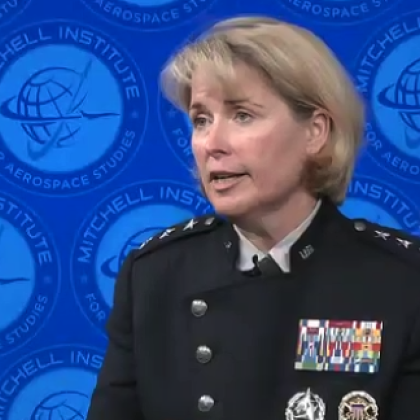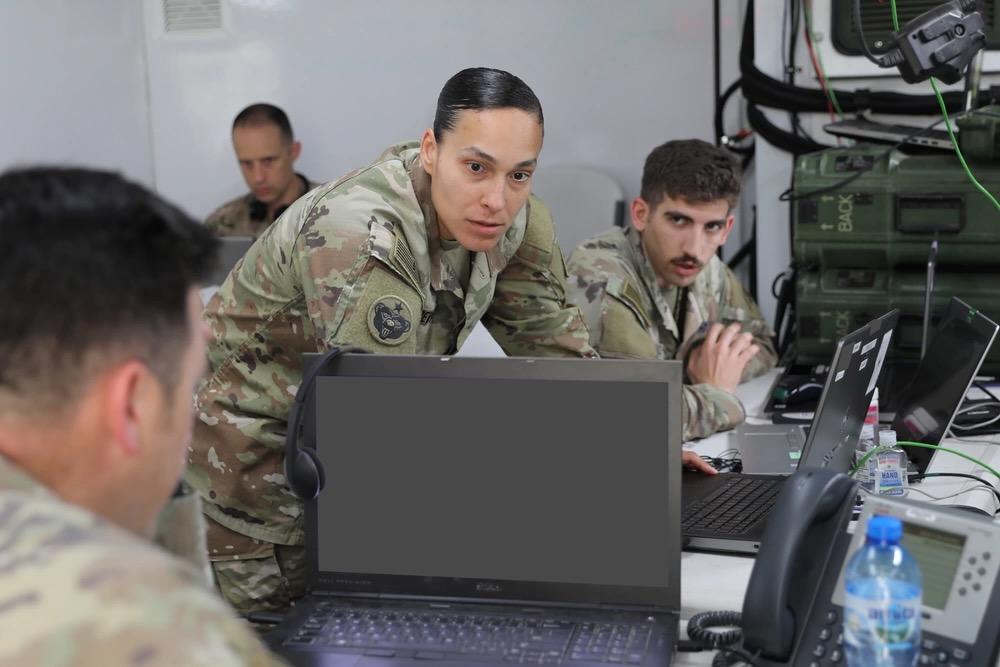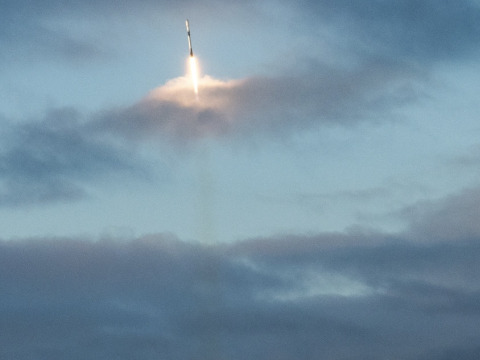Groundbreaking Ground Moving Target Indicators Will Lead to Air Moving Target Indicators
The U.S. Space Force is working on a groundbreaking capability that will help the military in part achieve its vision to connect sensors to shooters for joint all-domain command and control across the air, ground, sea and space, said Lt. Gen. DeAnna Burt, USSF, deputy chief of space operations for operations, cyber and nuclear.
Burt, who spoke to Jennifer Reeves, senior resident fellow at the Mitchell Institute, during a Schriever Spacepower Series presentation on August 4, sees firsthand the operational needs of the Space Force and the active risks.
To help protect the United States, the service is in the process of testing prototypes of so-called air moving target indicator (AMTI) satellites in conjunction with the U.S. Air Force and U.S. Northern Command (NORTHCOM). These AMTIs will build on the success of ground moving target indicators, or GMTIs, that the service is now pursuing.
The initial satellites that are launching include capabilities that will help enable GMTIs that include electro-optical and low-end radar capabilities.
The Space Force has also launched “quite a few” related satellites for a communications mesh network that will allow the other satellites to transfer data.
“One of the most groundbreaking capabilities currently being worked on is the ability to track threats in real time from space and then relay that precise information to the shooters on the ground, at sea and in the air,” Burt explained. “And we are learning right now, every day with GMTI.”
In creating the indicator capabilities, Burt noted that the Space Force is working “very closely” with the National Reconnaissance Office and the National Geospatial-Intelligence Agency (NGA) at NGA’s year-old Joint Mission Management Center (JMMC) in Springfield, Virginia.
The JMMC, at NGA’s headquarters, is the joint hub for space intelligence data collected from the U.S. Department of Defense, various intelligence agencies and international parties, meant to inform decision-making.
“[We are] really building off their expertise in looking at moving targets, and how do you pull multiple intelligence capabilities together to execute that,” Burt said.
Space Delta 7, the Space Force’s unit for intelligence, surveillance and reconnaissance (ISR) and targeting, is the lead to deliver GMTI capabilities. Already, a small detachment of guardian operators from Delta 7 are co-located at the JMMC to develop tactics, techniques and procedures for GMTI and to inform AMTI.
“We are also force-presenting regional elements to each of the U.S. combatant commanders of how would that be force-presented, so each of the regional commanders, when they are given their allocation on GMTI, they would then be able to integrate those into their mission sets and task them directly, machine to machine,” Burt explained.
In connecting sensor to shooter, either in the ground, and later in the air, the idea is Delta 7, as lead, would report activity to the Space Force and to the team at Vandenberg Space Force Base “to then collate and bring all of that together and act on behalf of the joint staff,” she said.
The initial GMTI satellites are beginning to launch, and the Space Force has also conducted numerous exercises and tabletops to learn how to execute the assets in real time.
“Every bit of that learning on GMTI will apply to air moving target indicators,” Burt stressed. “And we are working with a variety of commercial entities and industry partners on what the different phenomenologies are that would allow us to attract air moving target indicators.”
In addition, the service is conducting an analysis of alternatives due this fall, which will lay out what the guardians can leverage from GMTI.
“How do we look at that as we go into the tasking and the communications to get that information from the sensor all the way down to the shooter, working through the C3BM [Department of the Air Force Program Executive Office for Command, Control, Communications and Battle Management] folks, the JADC2s with [Lt. Gen.] Luke Cropsey’s team, and all of that is interconnected in that network. So, I think there's a lot of to be learned from GMTI and how do we apply that to AMTI.”

One of the most groundbreaking capabilities currently being worked on is the ability to track threats in real time from space and then relay that precise information to the shooters on the ground, at sea and in the air.
For GMTI, the service would allocate time on a satellite through a regional element and service component, such as the Space Force representative to the U.S. Indo-Pacific Command, who would present that to U.S. Indo-Pacific Command for direct tasking.
“No one else touches that time,” Burt said. “How you apportion capability to the combatant commanders, that will be done through service components.”
Here, the Space Force started working with the “big three” U.S. combatant commands: Indo-Pacific Command, as that region contains the United States' pacing threat; U.S. Central Command, because it was also a very large contingent and already stood up; and the U.S. European and Africa Command, Burt shared.
“And now that the big three have been our focus, and as we have seen the threats shift and the focus, we've started to look now at where are we with the southwest border,” she stated. “How do we continue to support NORTHCOM and STRATCOM and shoring up the southwest border? So, we've started to add more personnel to those. We don't have timelines on additional stand-ups, but I think those will continue to be the focuses, defending the homeland and the southwest border.”
Congress is considering spending levels for AMTI, with $2.2 billion currently earmarked in the military’s budget.
The general expects the analysis of alternatives to help shed light on the funding needs and how the military can perform the necessary research, development, testing and engineering for the AMTI capability.
The goal is “to be able to say, ‘OK, that is an air moving target,’ and how would I then pass it to a combat controller working with aircraft or deliver it directly to the cockpit as needed.”




Comments